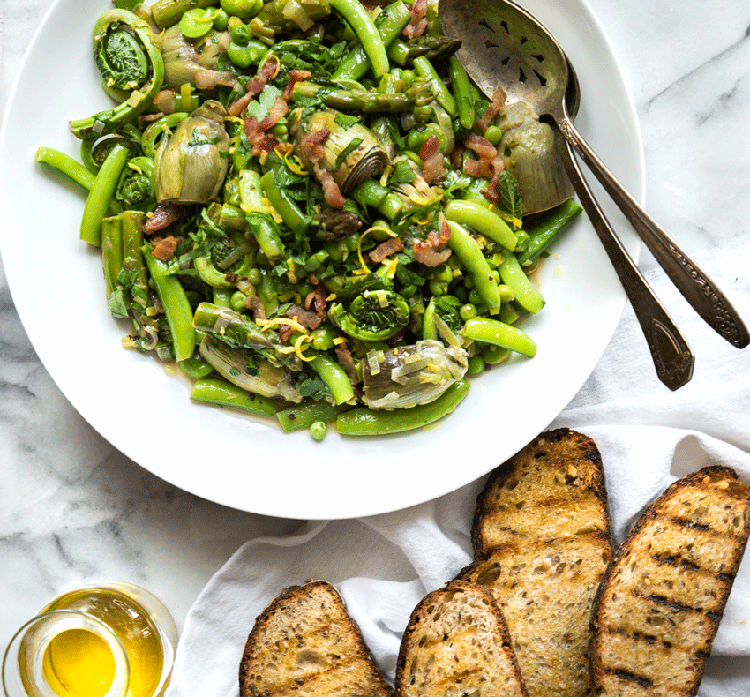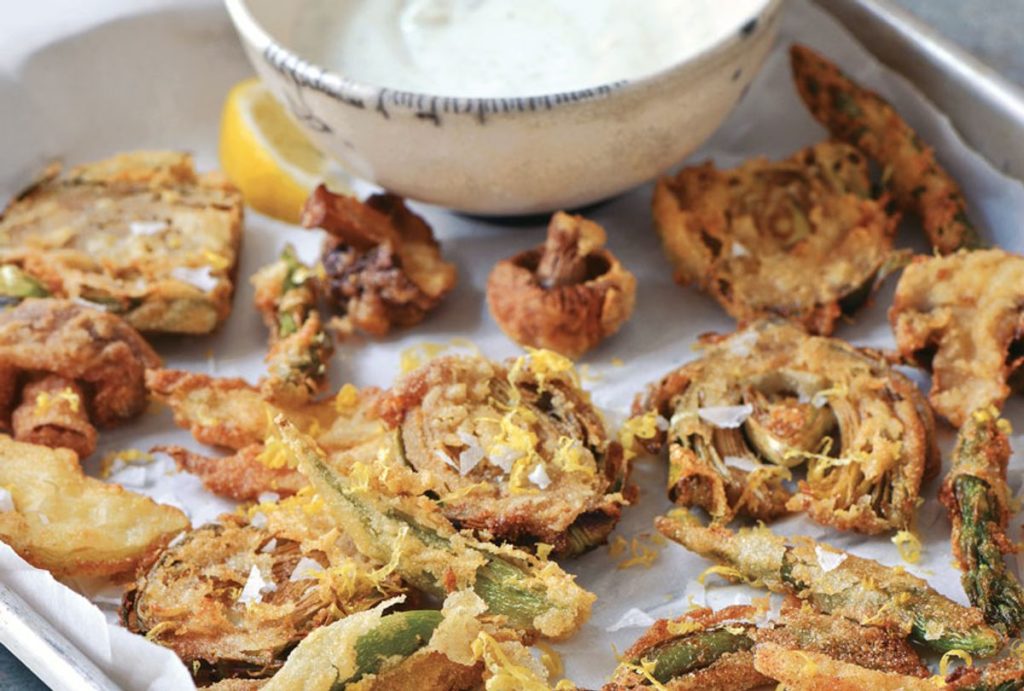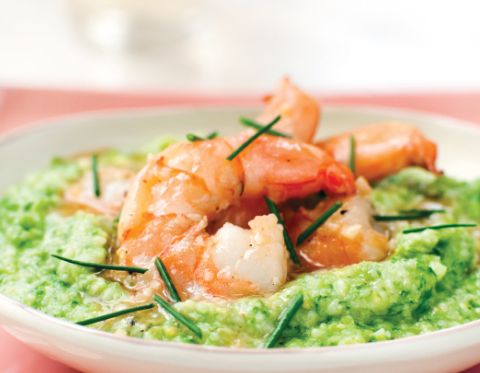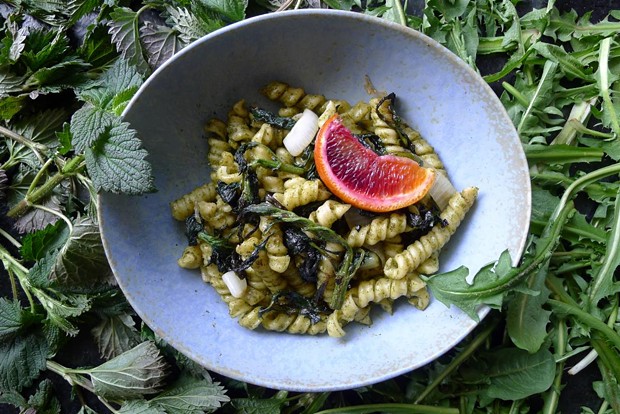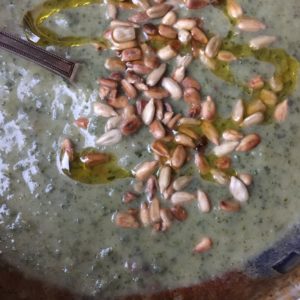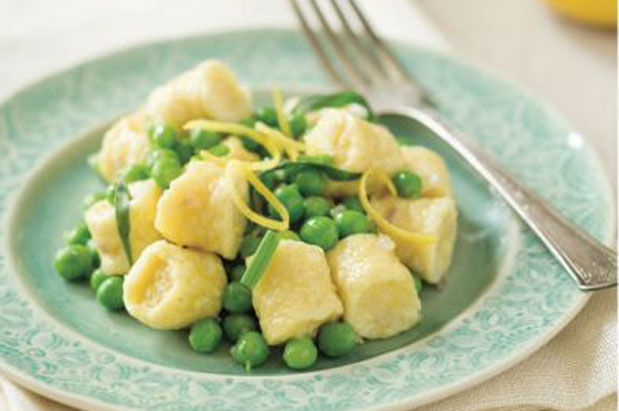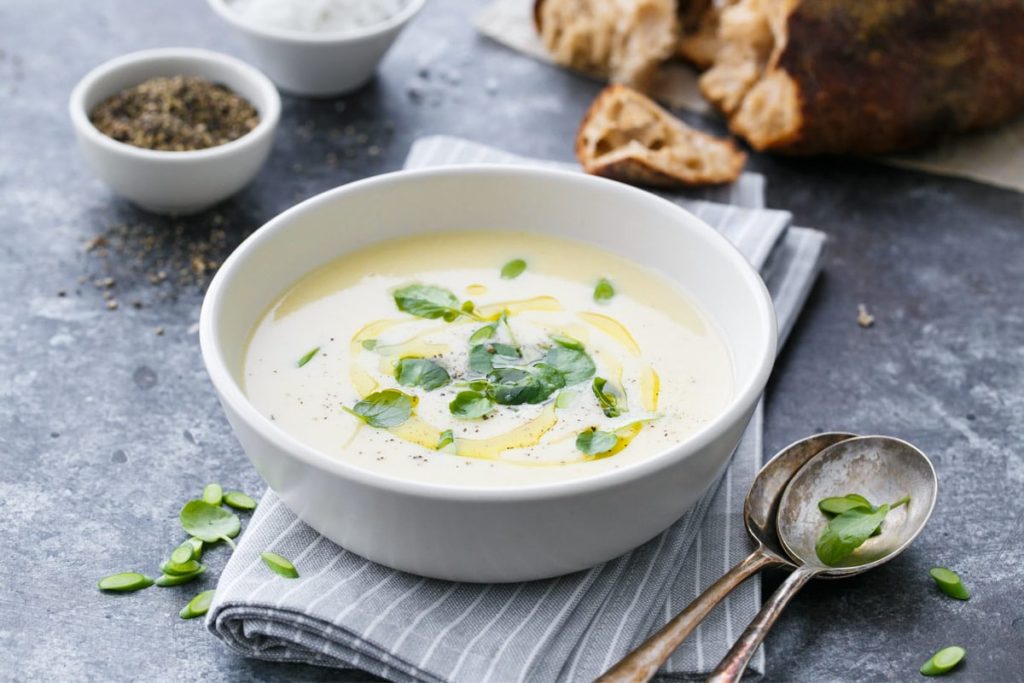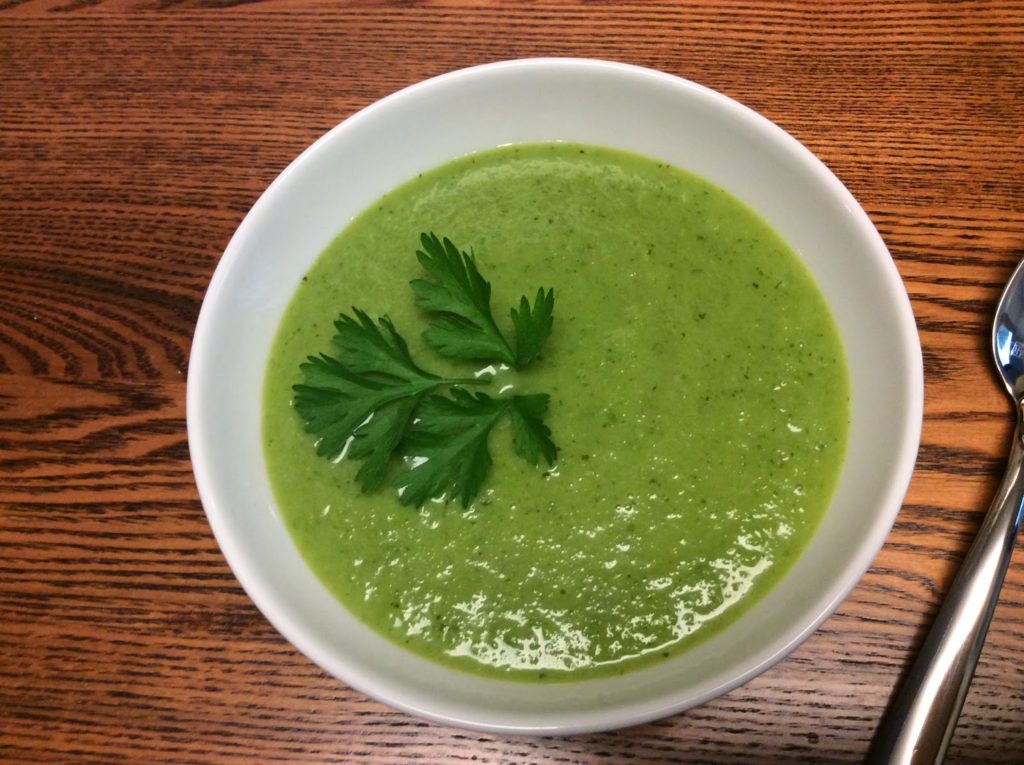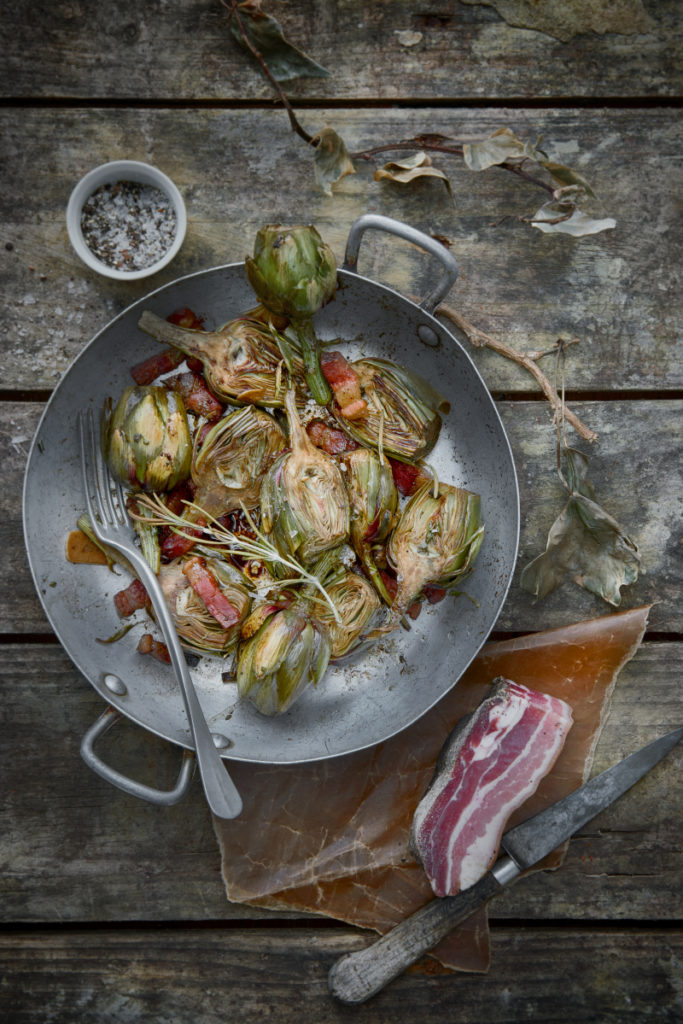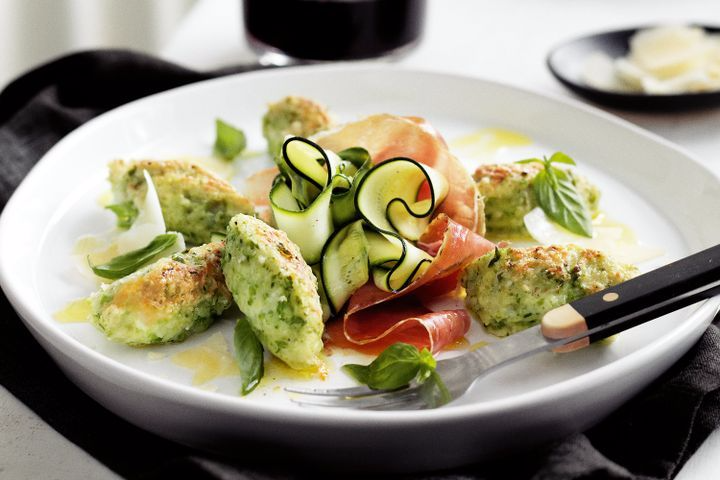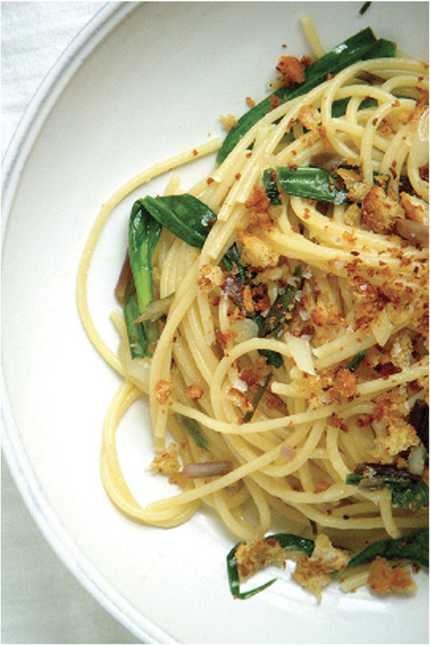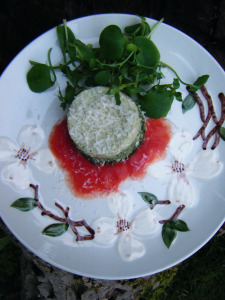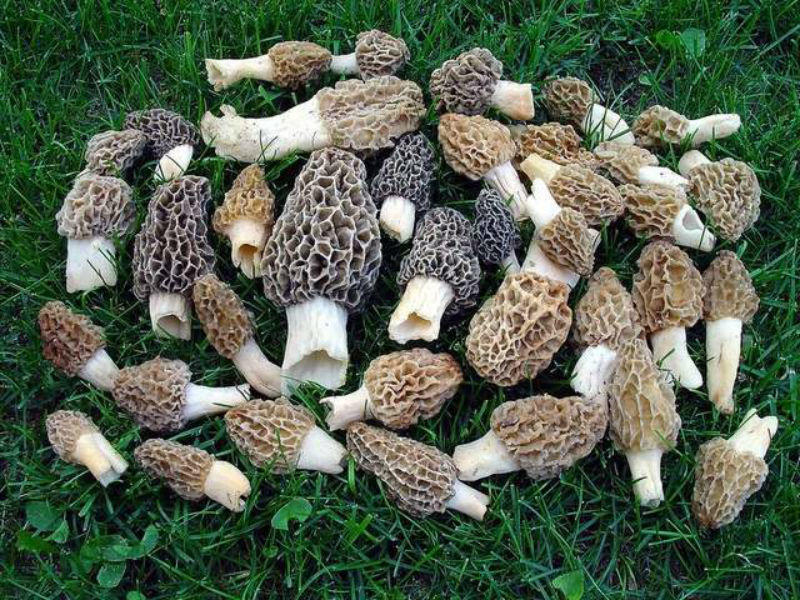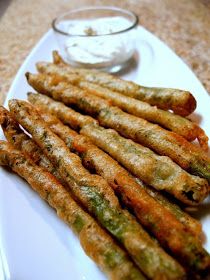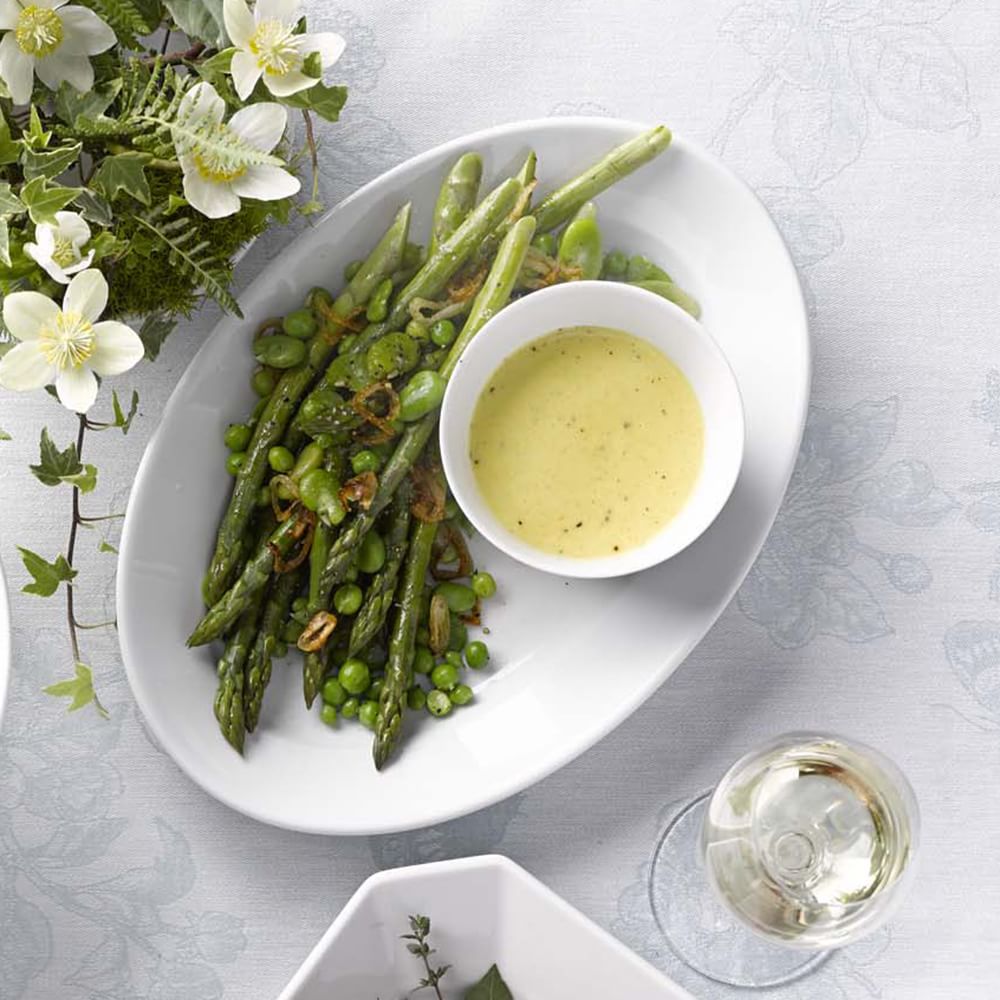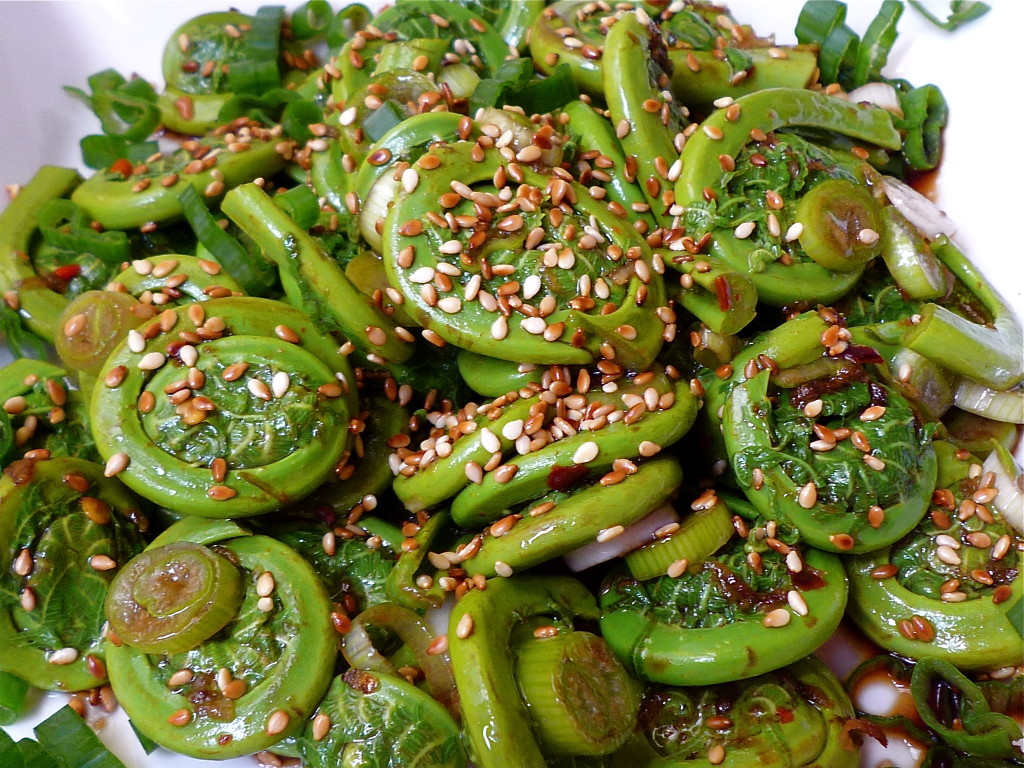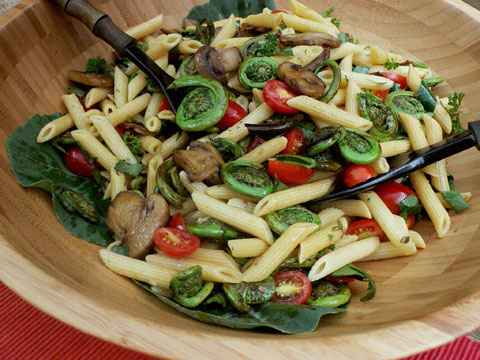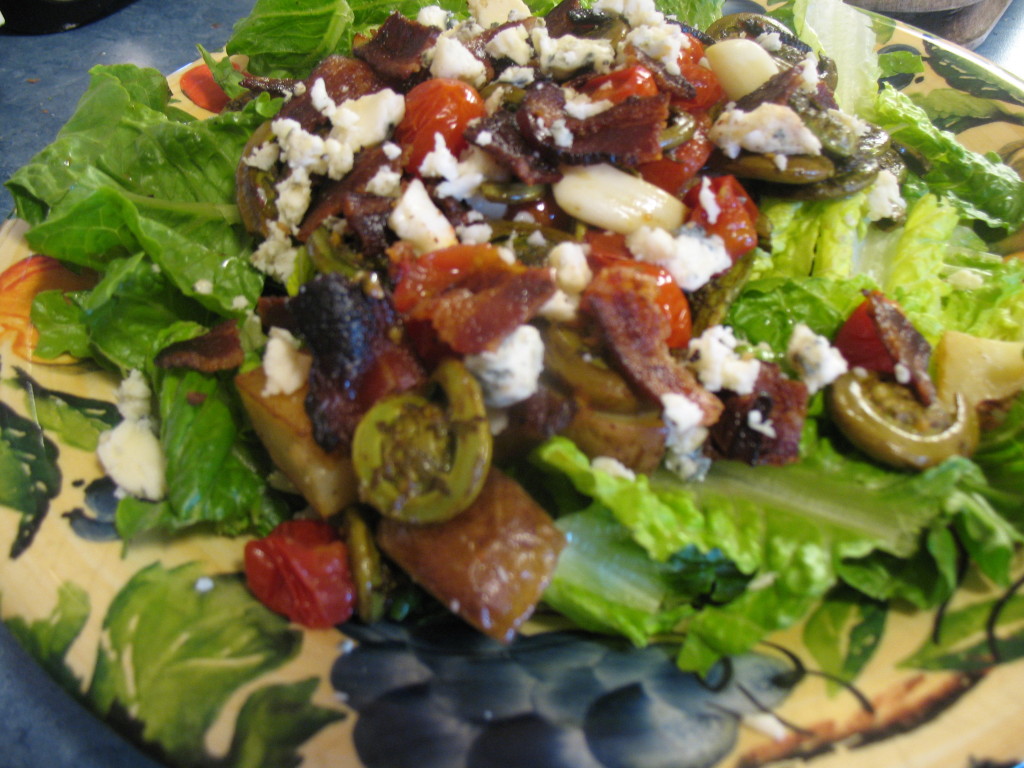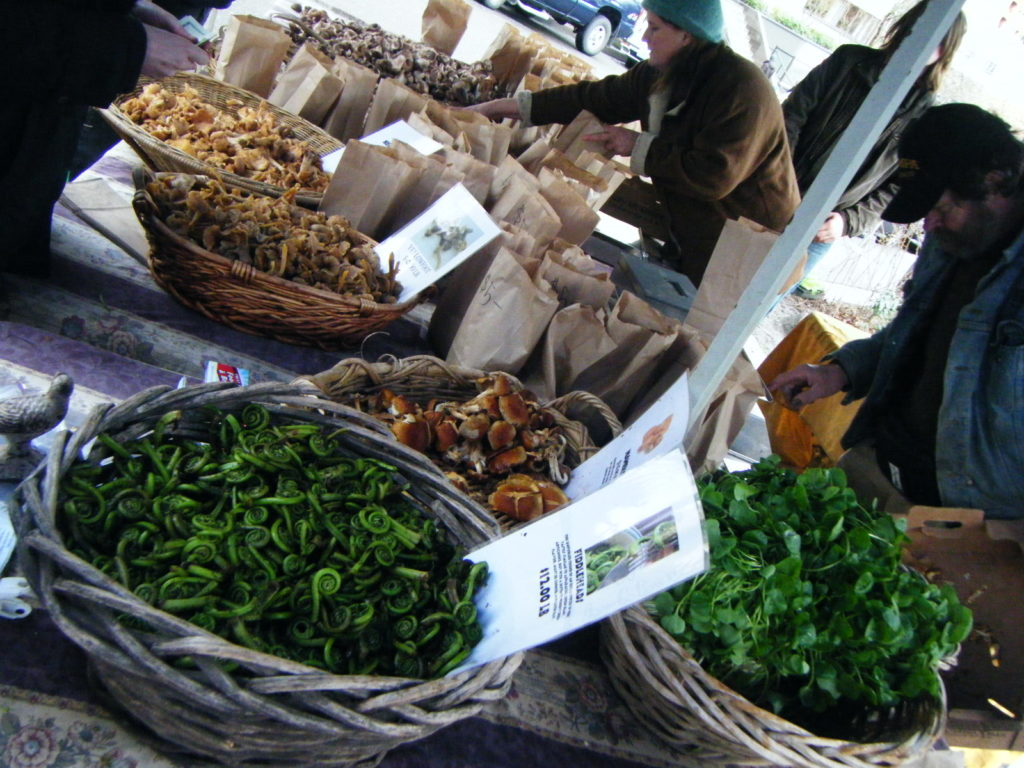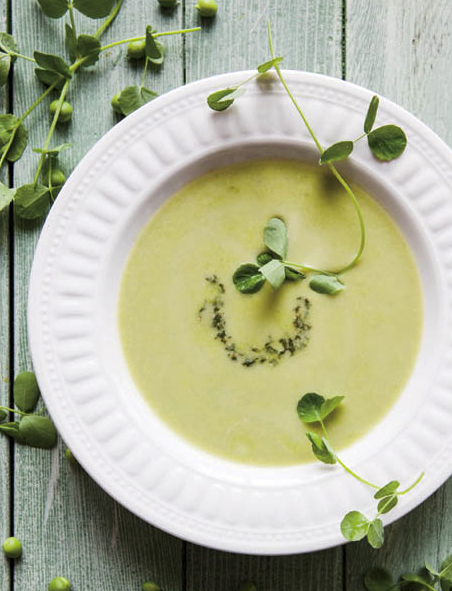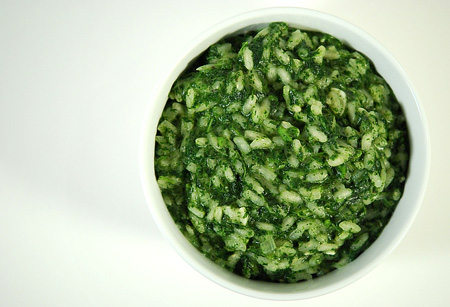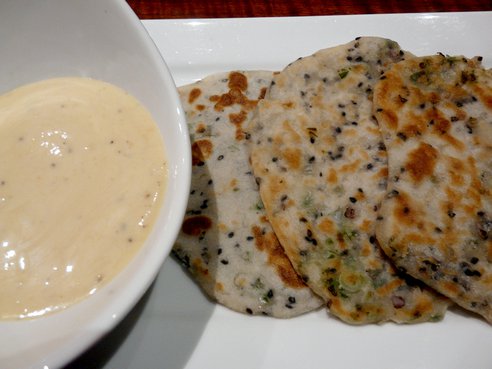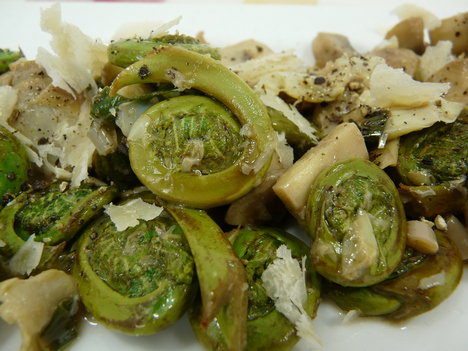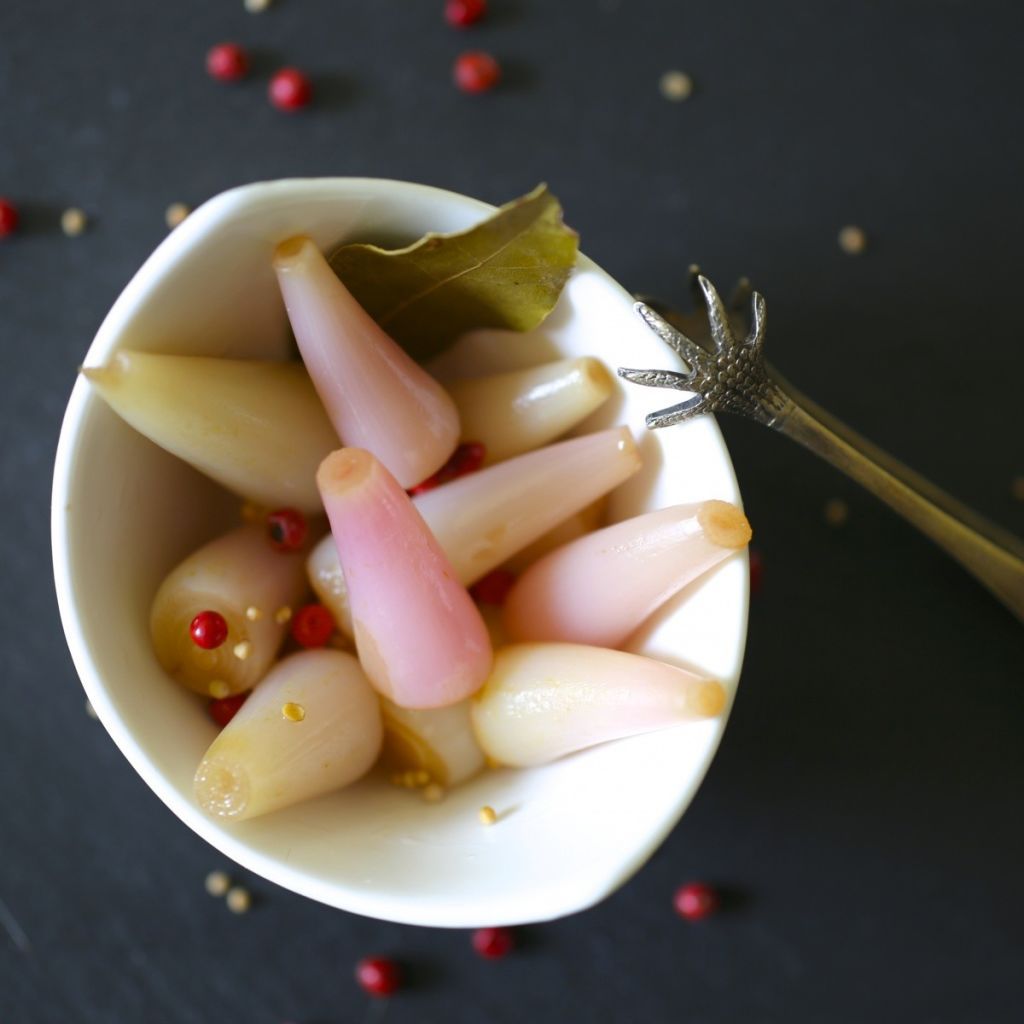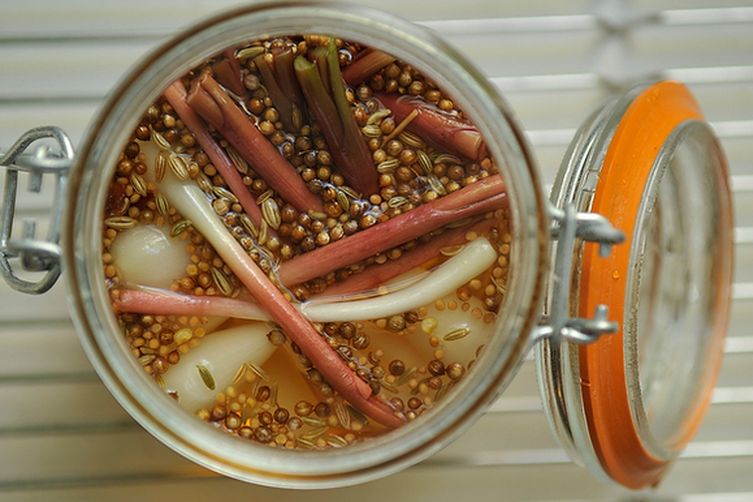Velvety Asparagus-Mint Soup With Lavender-Lemon Goat Cheese
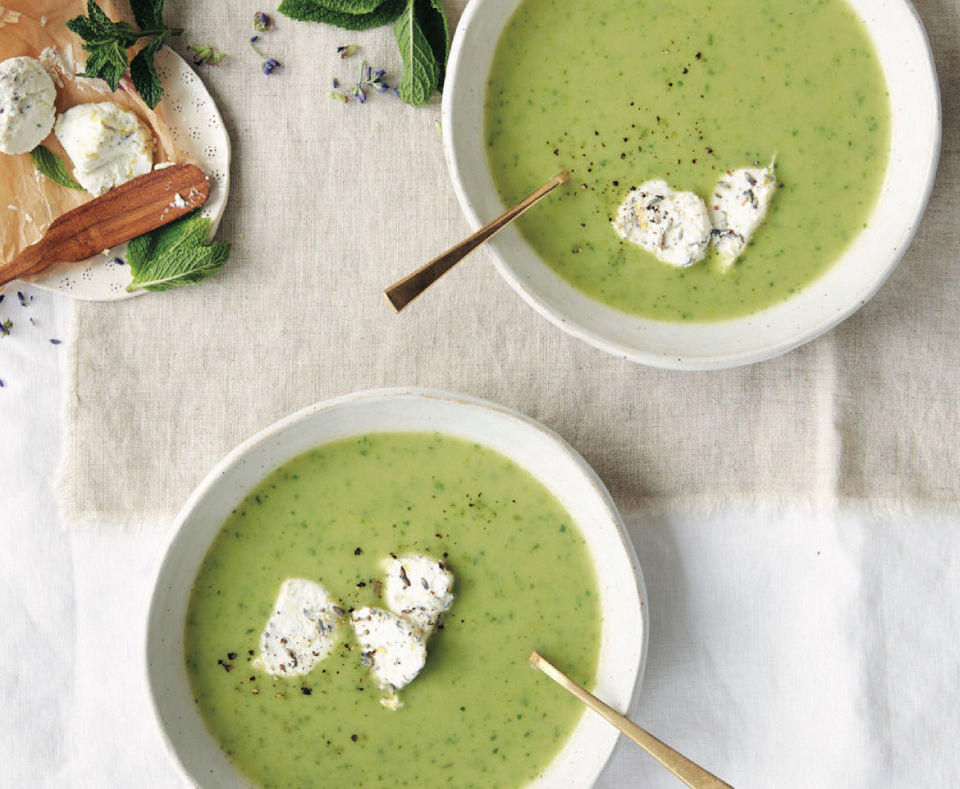
Winter may not be as cold in the Northwest as other parts of the country, but it sure is dark. We get pretty excited at the sight of green stalks and leafy herbs; it means the days are getting longer and brighter. This soup is a mouthful of green — leek, asparagus, mint, and tarragon—bolstered by the thickening power of potatoes. If you’ve got sorrel growing in the yard or have access to wild watercress, feel free to throw some into the pot as well. Although this green soup is plenty good on its own, the lavender-lemon goat cheese, added just before serving, transforms it into a luxurious ride.
4 ounces (about 1/2 cup) plain goat cheese
3/4 teaspoon finely chopped dried culinary lavender
Grated or minced zest of 2 medium lemons
3 medium-starch potatoes (about 1-1/2 pounds), peeled and cut into 1-inch pieces
2 cloves garlic, peeled
1 teaspoon fine sea salt
3 cups water
3 T. extra-virgin olive oil
1/2 pound leeks, white and light green parts only, washed thoroughly and cut into 1/2-inch rounds
1 pound asparagus, woody ends trimmed, cut into 2-inch pieces
4- to 5-inch piece Parmigiano-Reggiano rind (optional, see note)
1/4 teaspoon ground black pepper
1/4 cup sorrel or watercress (optional)
1/2 cup whole mint leaves
1 T. fresh tarragon leaves, stemmed
Juice of 1/2 lemon
1/2 baguette or favorite crusty loaf, cut into 1/2-inch-thick slices (optional)
Put the goat cheese in a small bowl and mash until soft and malleable. (You can also do this in a food processor.) Stir in the lavender and half of the lemon zest until evenly distributed. Shape the cheese into a log and wrap in parchment paper, twisting each end tightly like a candy wrapper. Place the cheese in the freezer for about 15 minutes, then transfer to the refrigerator until ready to use. Preheat the oven to 300 degrees. Put the potatoes, garlic, and 1/2 teaspoon of the salt in a medium saucepan and cover with the water. Bring to a boil over medium-high heat, cover, reduce the heat to medium low, and cook until the potatoes are fork-tender, about 10 minutes. Using a slotted spoon, transfer the potatoes with garlic to a medium bowl, and reserve the cooking water. In a large, heavy-bottomed pot, heat the oil over medium heat, tilting the pan to coat. Add the leeks and stir to coat with the oil. Cook until softened, about 5 minutes. Add the asparagus and cook until softened, about 2 minutes. Add the potatoes and 5 cups liquid — measure out the reserved potato water and add enough tap water to equal 5 cups. Add the cheese rind, remaining 1/2 teaspoon salt, and pepper. Bring the mixture to a boil, then reduce the heat to medium low and cook, uncovered, until the asparagus is tender, about 10 minutes. Add the sorrel to the pot at around minute 8 of cooking. Meanwhile, arrange the baguette slices on a sheet pan and toast until crisp in the oven, 20 to 30 minutes. Remove the cheese rind from the pot and stir in the mint, tarragon, and remaining lemon zest. Puree the soup until smooth using an immersion or stand blender (be careful of spattering hot liquid and be sure to only fill the stand blender halfway). Return the soup to the pot and gently rewarm over low heat. Gradually add the lemon juice, tasting for acidity, and season with additional salt as needed. To serve, ladle the puree into six bowls. Using a serrated knife, cut the goat cheese log into 1/4-inch rounds and smear over each crostini, floating them in the soup bowls, or simply drop one or two cheese rounds into each bowl. The puree reheats well and will keep for about 4 days in an airtight container in the refrigerator. Transfer the patties to a sheet pan and place into the oven to keep warm until serving. The patties will be slightly soft on the inside with a firm, crusty coating. NOTE: If you have a Parm rind on hand, feel free to use it for an umami boost; if not, though, no worries — the soup will still be lovely.
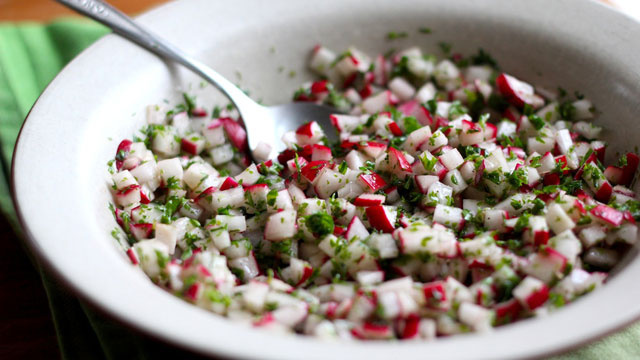 Spring Radish Salad
Spring Radish Salad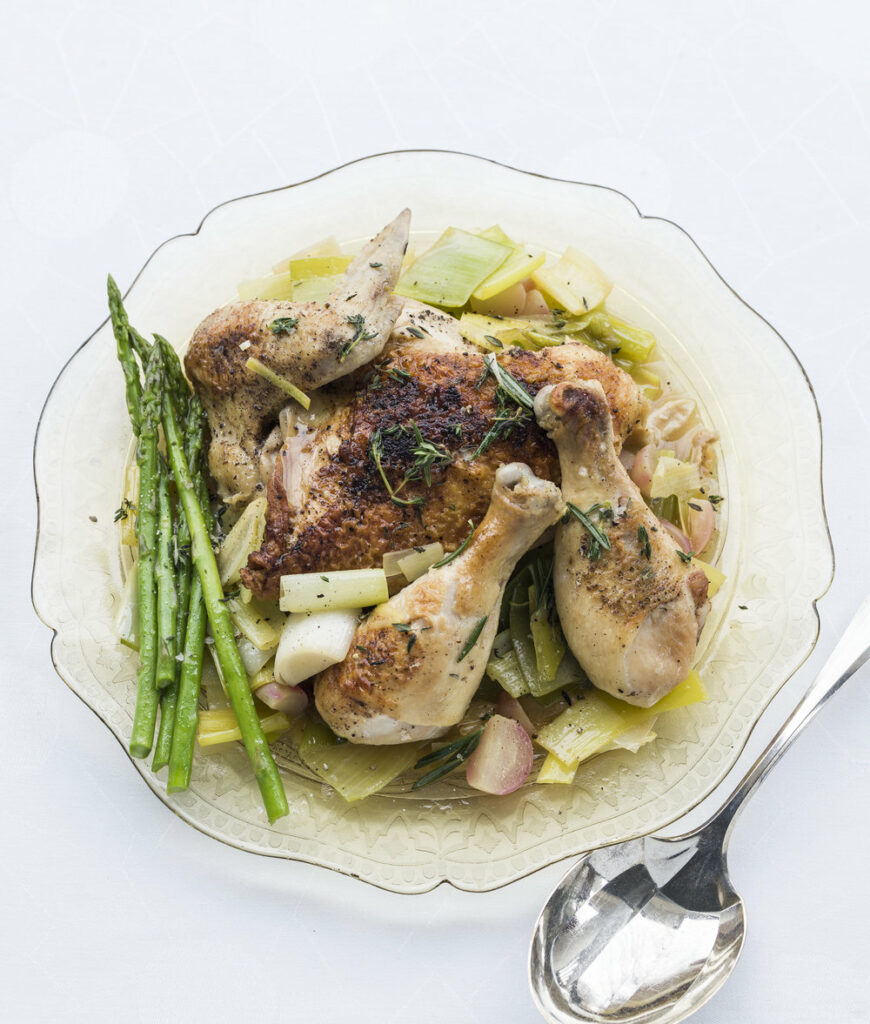 Butter-Braised Chicken with Spring Veggies
Butter-Braised Chicken with Spring Veggies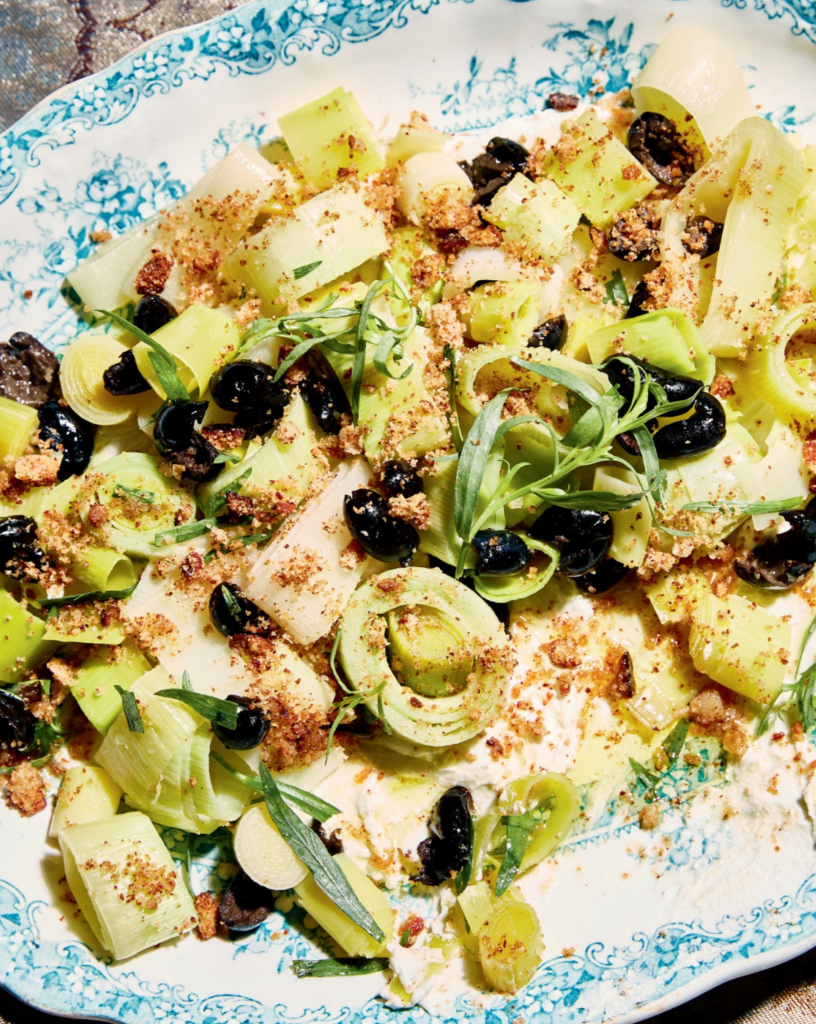 Leeks in Vinaigrette with Black Olives and Bread Crumbs
Leeks in Vinaigrette with Black Olives and Bread Crumbs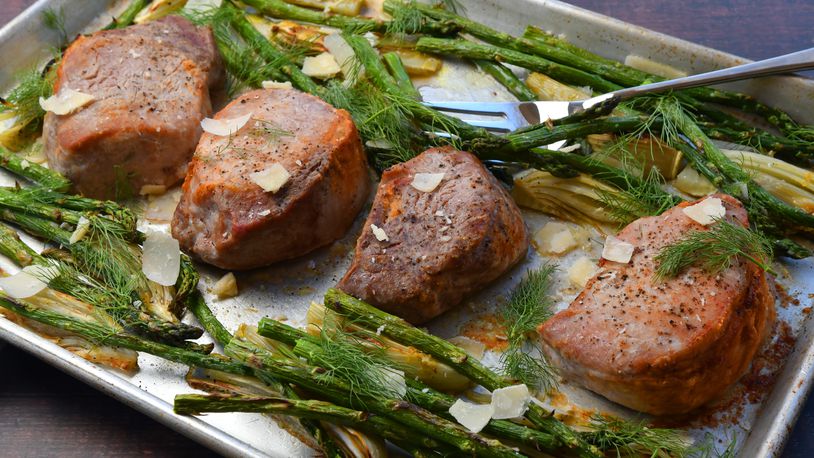 Sheet Pan Pork Chops with Asparagus and Fennel
Sheet Pan Pork Chops with Asparagus and Fennel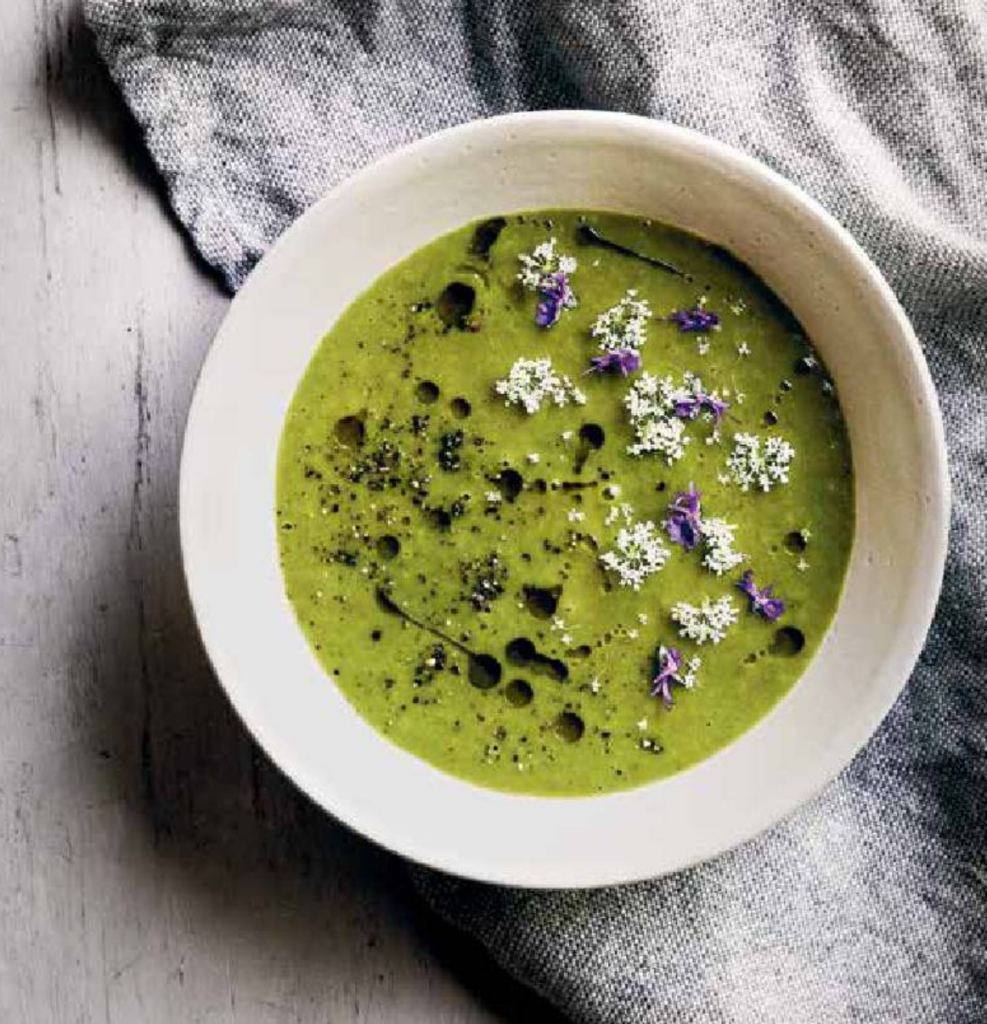 Cream of Lovage Soup with Edible Spring Herb Flowers
Cream of Lovage Soup with Edible Spring Herb Flowers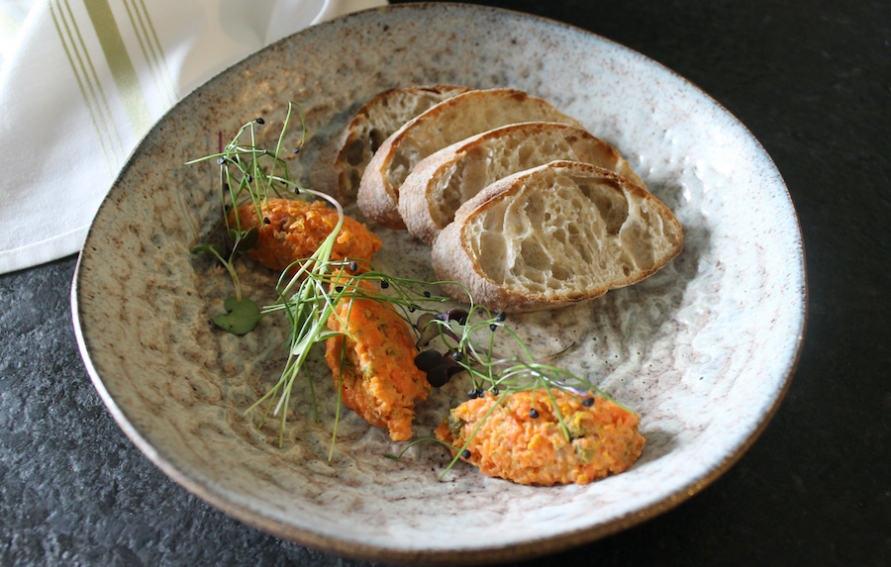 Spring Carrot Tartare with Lime Creme Fraiche, Capers, Shallots and Chives
Spring Carrot Tartare with Lime Creme Fraiche, Capers, Shallots and Chives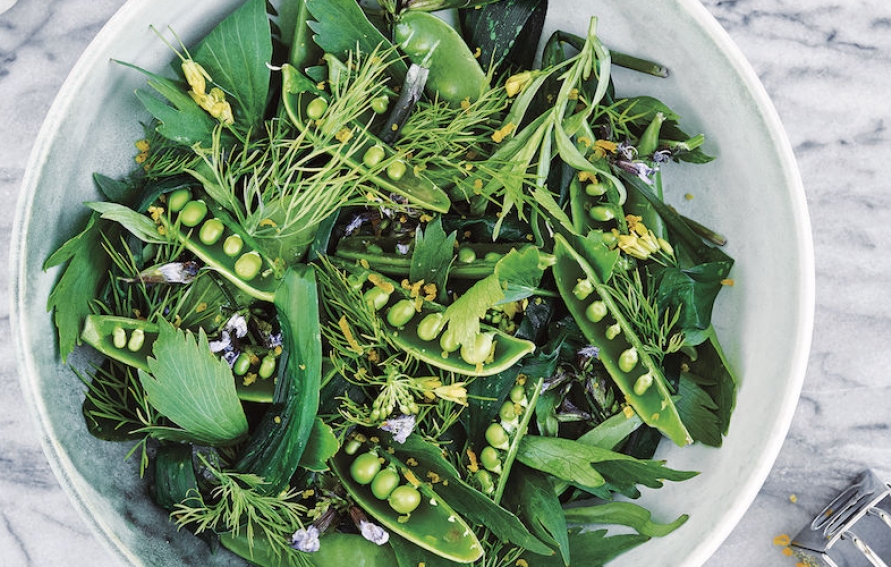 Spring Salad with Ramps and Herbs
Spring Salad with Ramps and Herbs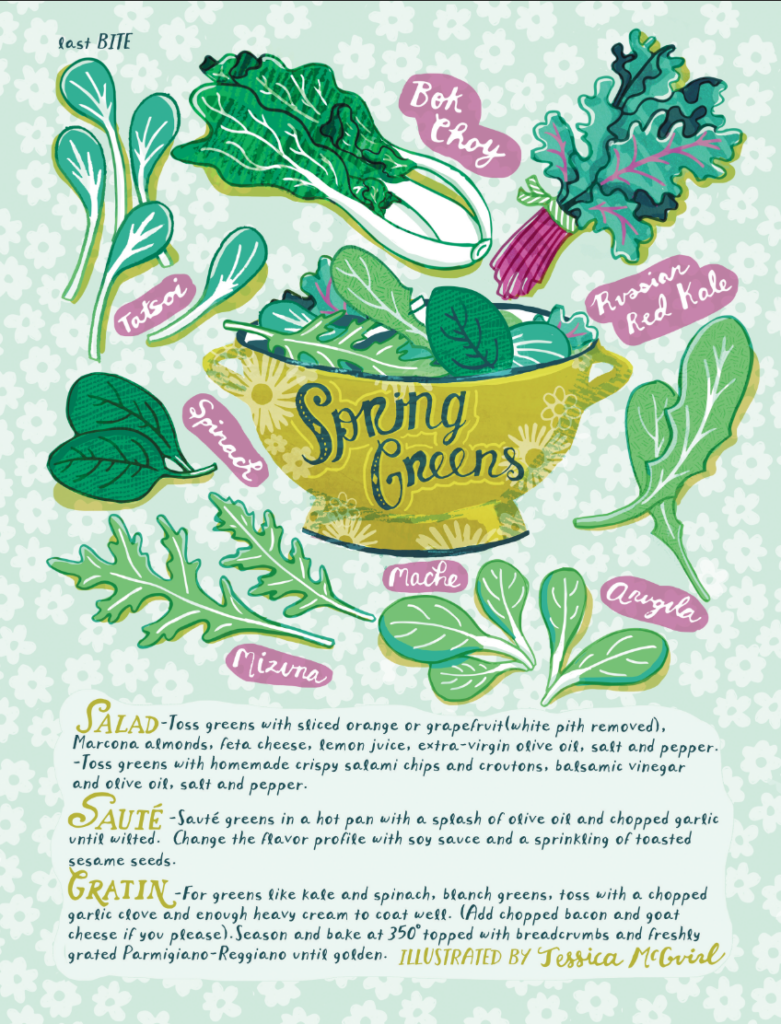
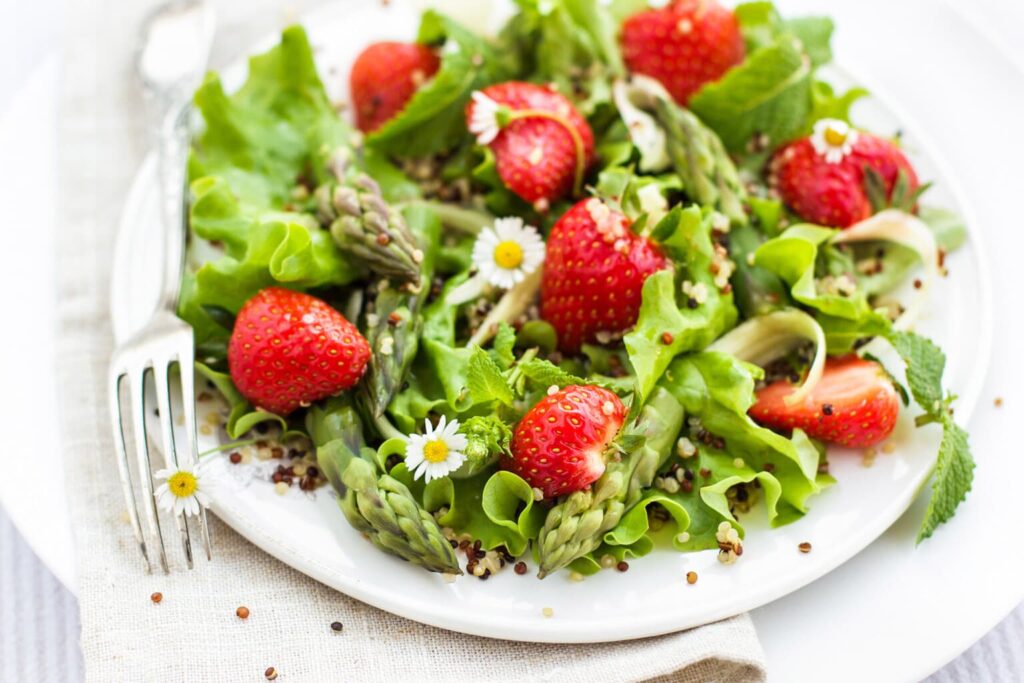 Best Spring Salad
Best Spring Salad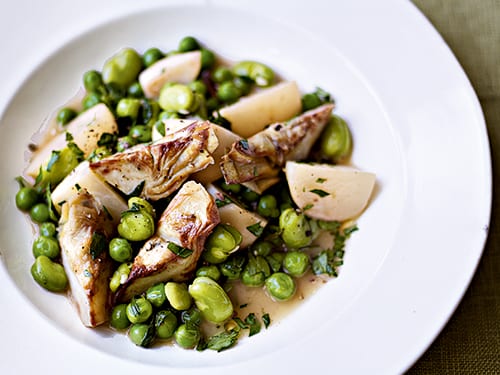
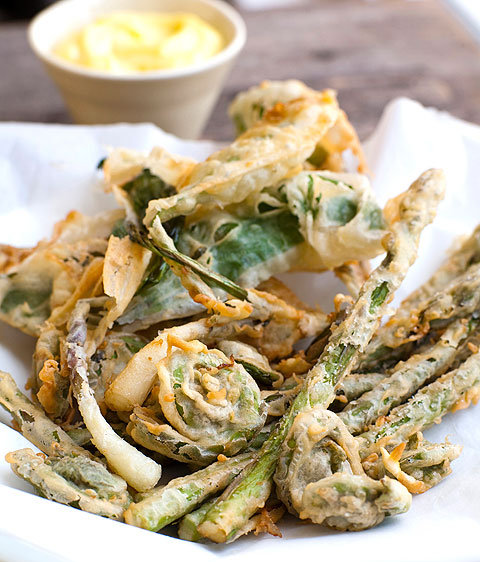 Fritto Misto of Fiddleheads, Ramps and Asparagus with Meyer Lemon Aioli
Fritto Misto of Fiddleheads, Ramps and Asparagus with Meyer Lemon Aioli